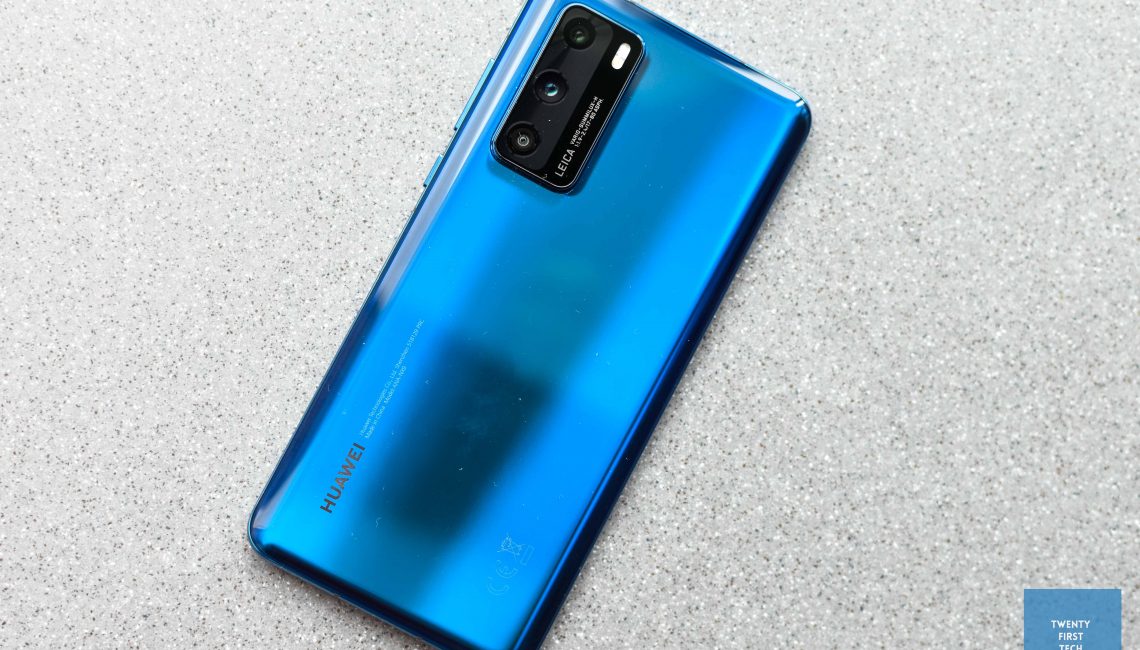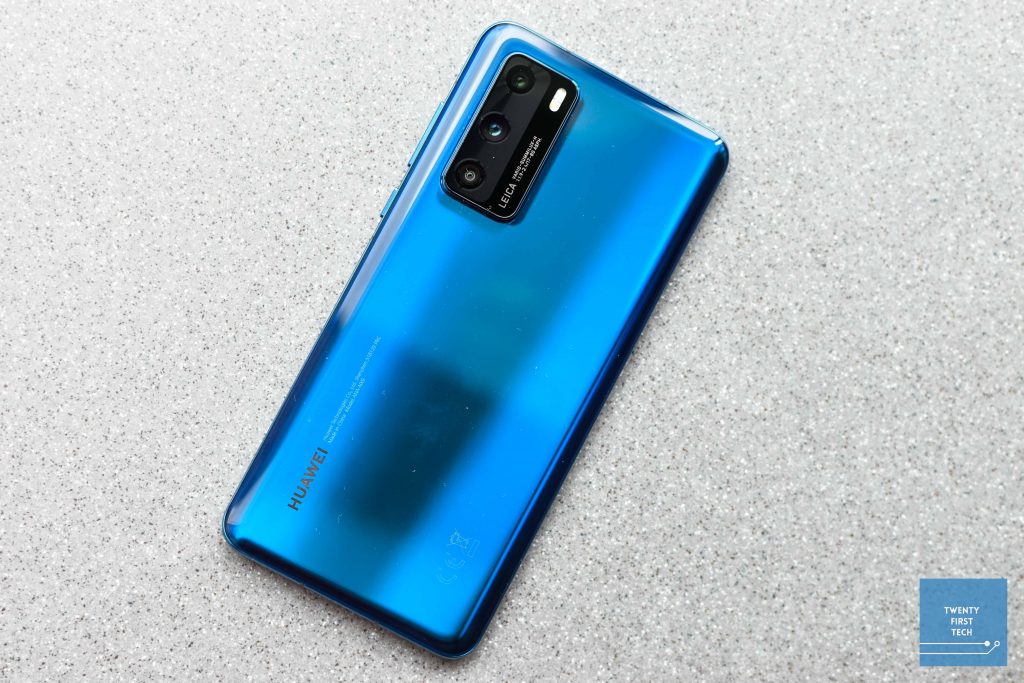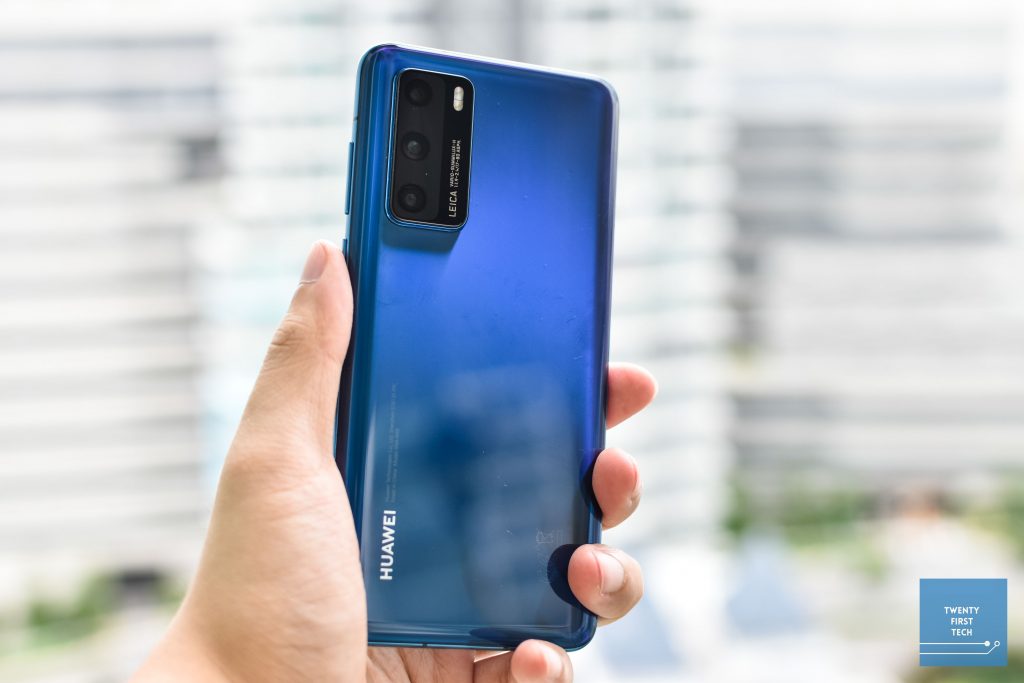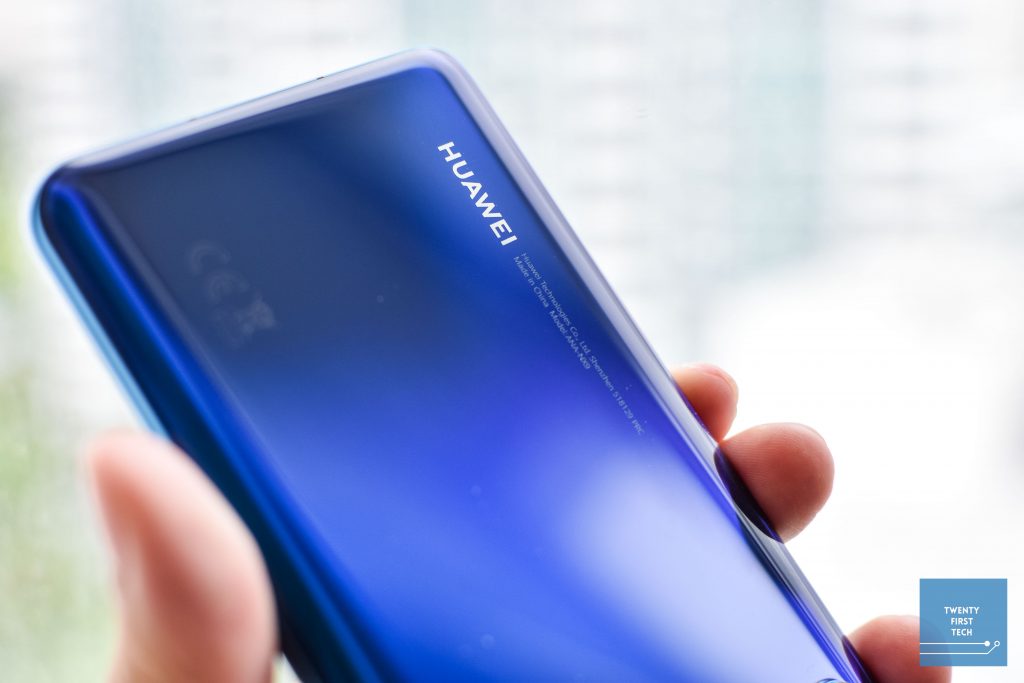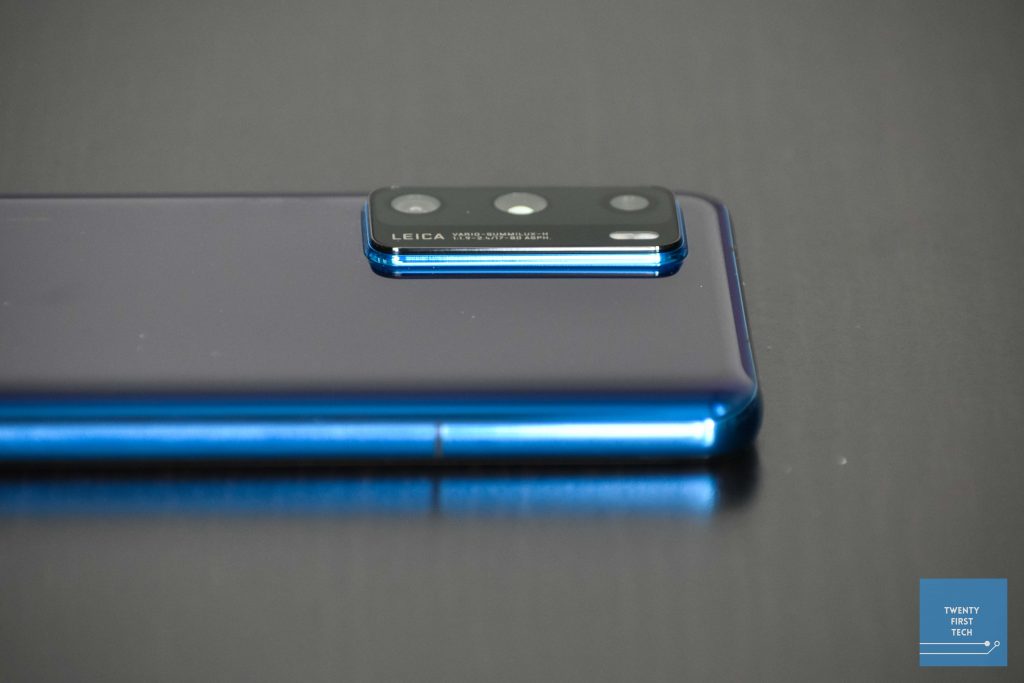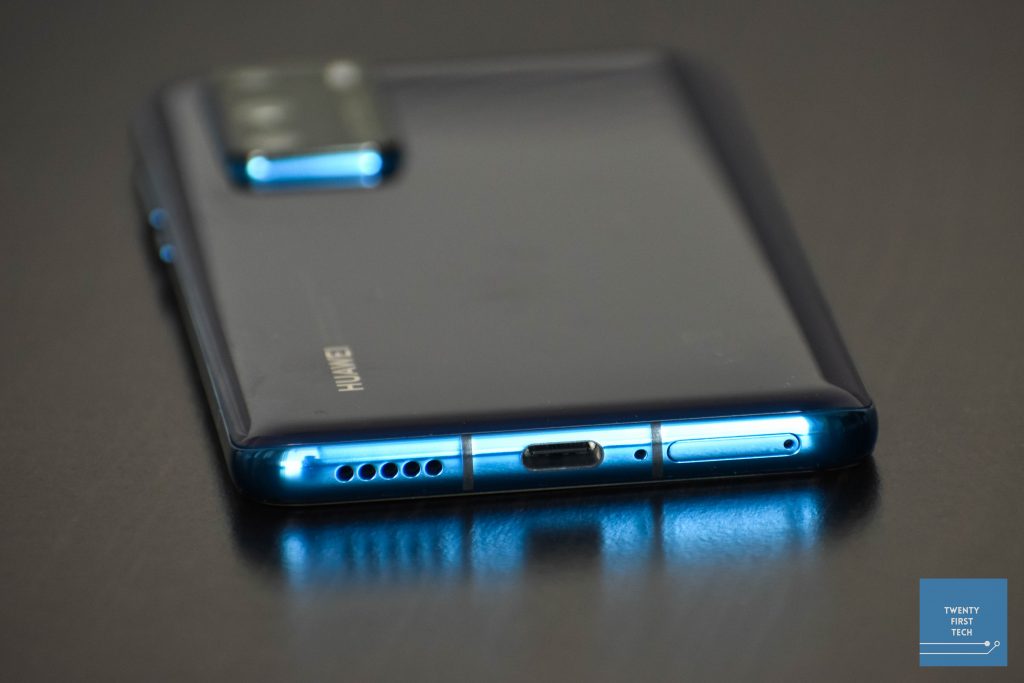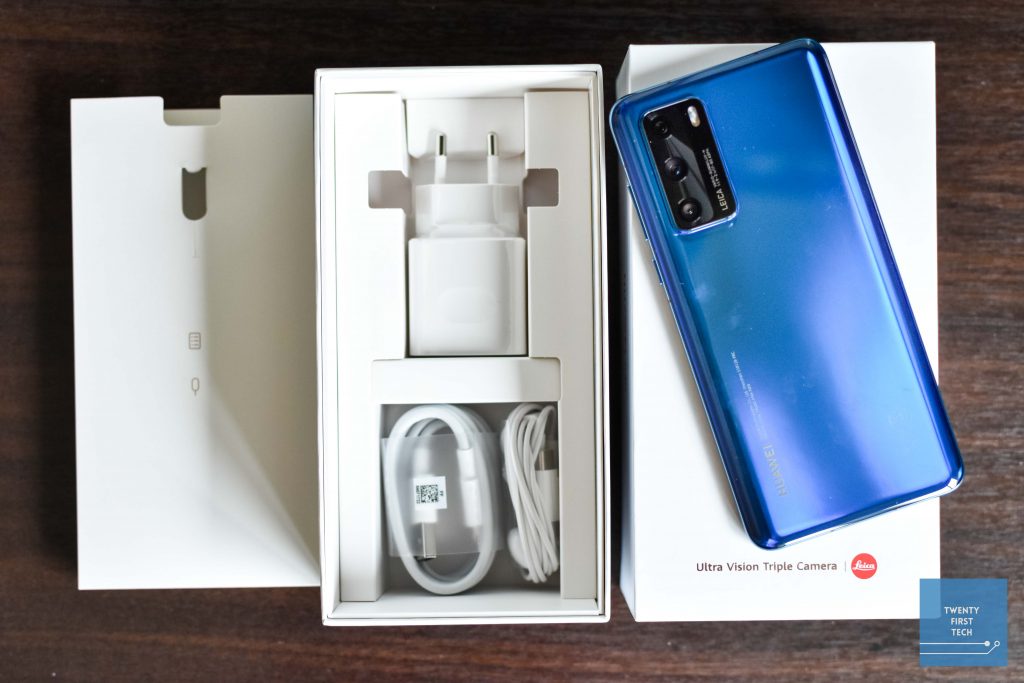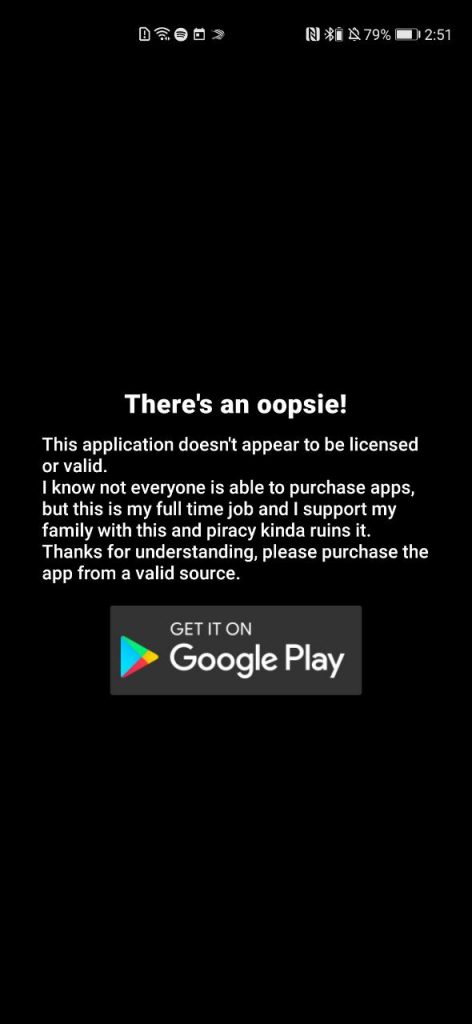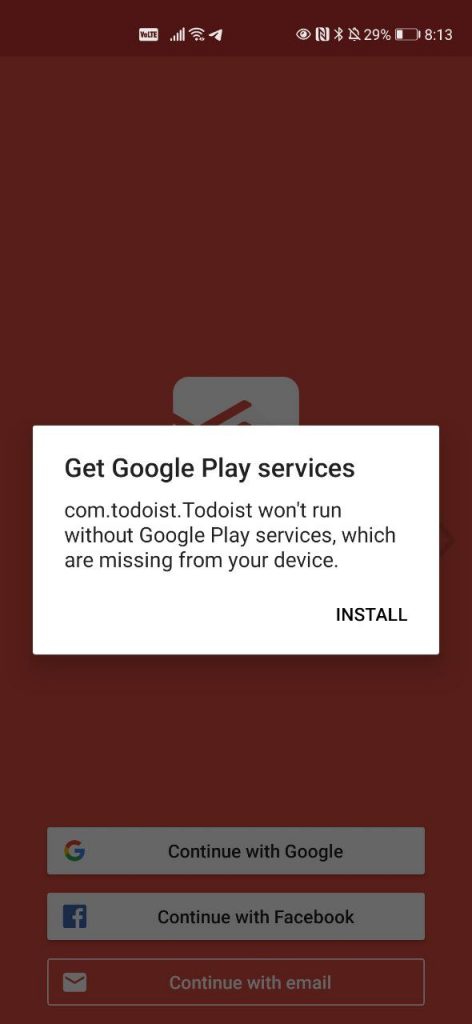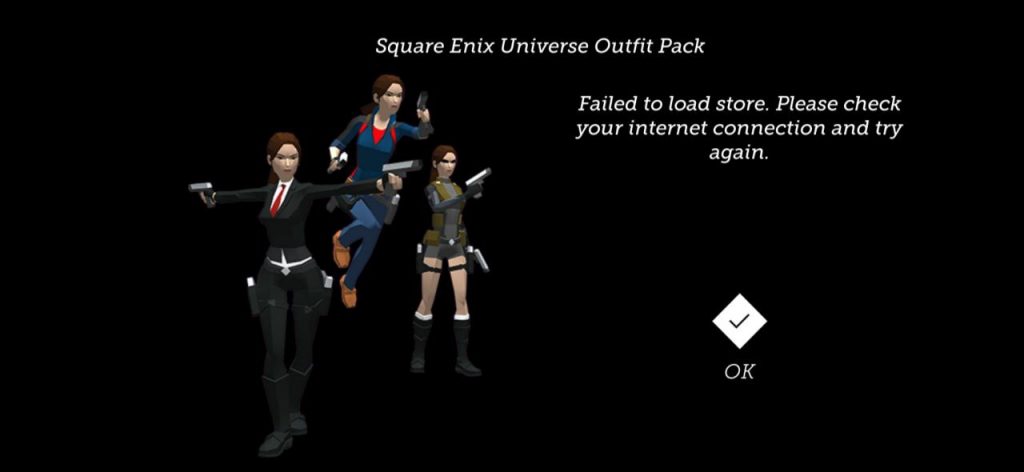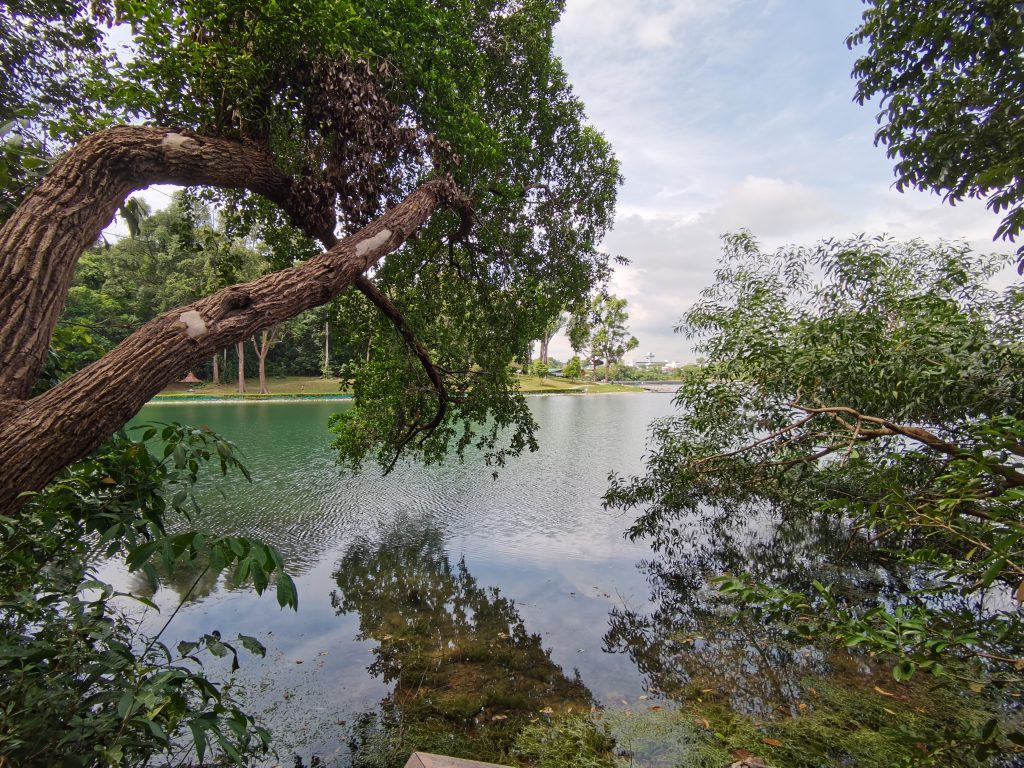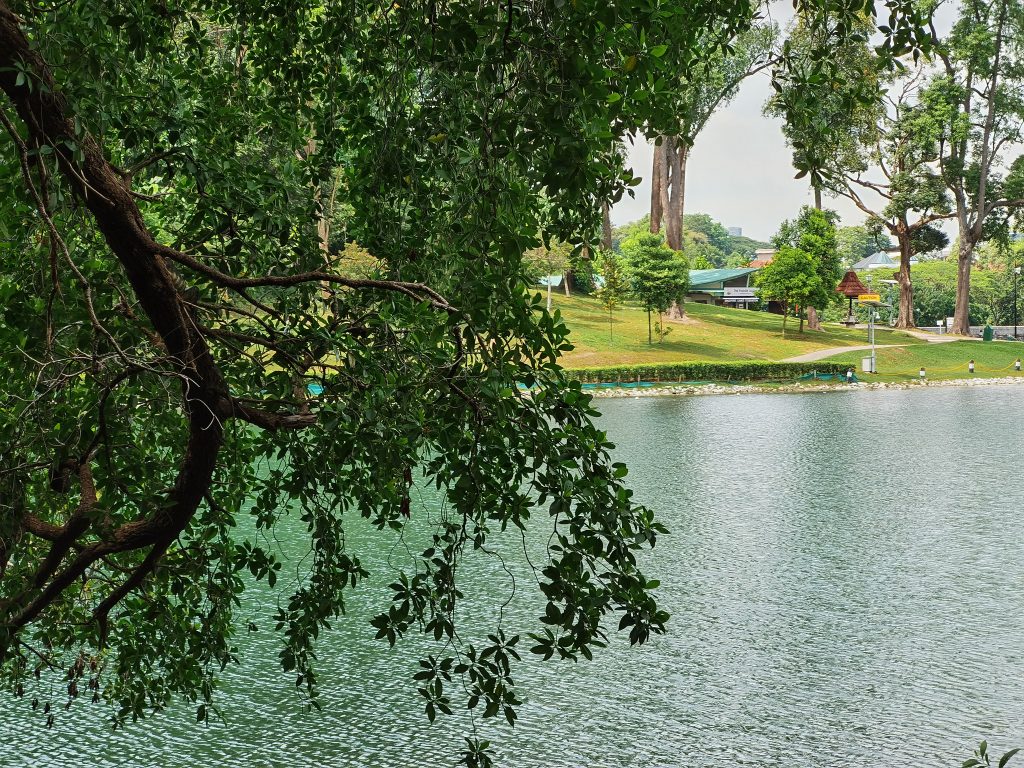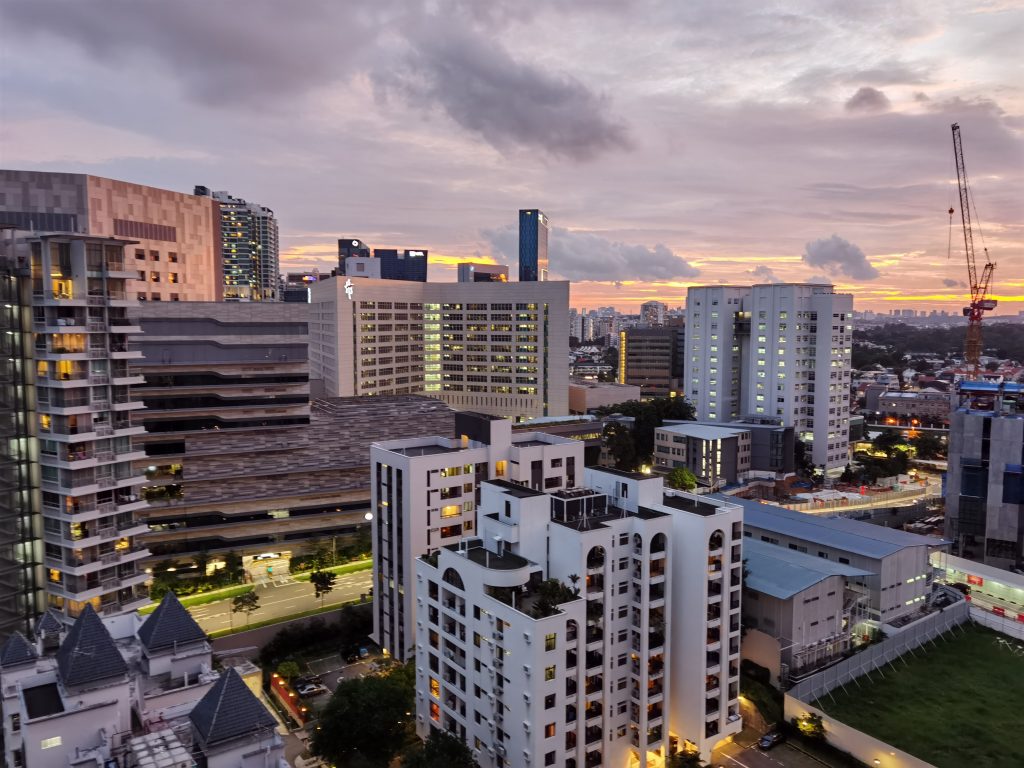I have a confession to make: I haven’t spent a lot of time with my Huawei P40 review unit. Physically, I’ve had the phone for about two weeks, which is the amount of time I typically spend with a phone before writing my review. But practically, I haven’t used the phone all that much.
Part of this can be attributed to the fact that we’re all stuck at home, and I tend to gravitate towards larger-screened devices for media consumption. But the bulk of it is because when I do want to use a phone, half the time I simply can’t use this phone for what I want to do.
I’ll elaborate after we get the specs out of the way.
Huawei P40 specs
- Body: Glass front and back, aluminium frame; IP53-rated for dust and splash resistance.
- Screen: 6.1″ OLED, 1,080×2,340px resolution (422ppi); 60Hz refresh rate; HDR10.
- Chipset: Kirin 990 5G, octa-core processor (2xA76 @2.86GHz + 2xA76 @2.36GHz +4xA55 @1.95GHz), Mali-G76 MP16 GPU, tri-core NPU.
- Memory: 6/8GB RAM, 128/256GB UFS3.0 storage (expandable via Nano Memory – hybrid slot).
- OS/Software: Android 10, EMUI 10.1.
- Rear camera: Primary: 50MP (RYYB filter), 1/1.28″ sensor size, 23mm f/1.8 lens, OIS, PDAF; Telephoto: 8MP 80mm f/2.4, OIS, 3x optical and 5x hybrid zoom, PDAF; Ultrawide angle: 16MP, 17mm, f/2.2, AF; 4K@60fps video capture; Leica co-developed.
- Front camera: 32MP, f/2.0, 26mm; 3D IR camera.
- Battery: 3,800mAh; Super Charge 22.5W.
- Security: Fingerprint reader (under display, optical), 3D face recognition.
- Connectivity: 5G/4G/3G/GSM; Dual SIM, Wi-Fi 6+, Dual-band GPS, Bluetooth 5.1 + LE, NFC, USB Type-C.
- Misc: Acoustic display acts as earpiece, bottom-firing loudspeaker.
A broken union
Let’s address the elephant in the room. What I was referring to before, of course, is the fact that this phone — and any Huawei phone since the Mate 30 — does not have Google Services. I wrote an entire separate article about the complications that this brings, which I highly recommend. But I’ll summarise the main points of that article here:
- Most Google apps straight up won’t work
- You do not have access to the Google Play Store to download apps, instead you’ll have to use Huawei’s AppGallery, but:
- Most of the apps you want are not on AppGallery, which means that you’ll have to sideload them, but:
- Even if you do manage to find the apps that you want and sideload them, there’s no guarantee that they will work
That’s a lot of “but”s, but that last point is especially important. Because if you think that you will be able to get by fine with this phone because you don’t use any of Google’s apps or services, you are gravely mistaken.
Most people aren’t aware of the extent to which Google Services is crucial for the regular functioning of their favourite Android apps. But the truth is that Google Services is more essential than you think, and many of the apps that you use on a regular basis simply won’t work without it. This is because many of Android’s apps rely on Google’s APIs to function, and a bunch of those won’t work without Google Services.
To get a glimpse of the extent of the damage, just take a look at the screenshots below:
Life without Google
Let me briefly illustrate my point about not being able to do on the Huawei P40 what I’d typically want to do on a phone.
Like most people, I primarily use my phone for messaging. While I am able to install WhatsApp on the Huawei P40 (not via the AppGallery by the way), I am unable to restore my chat backups because they are on Google Drive, which the P40 cannot access. UPDATE: Huawei has informed me that the latest version of Phone Clone (v10.1.1.360) is able to transfer WhatsApp chat data using Huawei’s cloud services. I haven’t been able to verify this.
Now that I am stuck at home, I spend many hours watching Netflix and YouTube, and I’d like to watch them on my TV. But I can’t Chromecast to my TV from the Huawei P40.
I can watch YouTube on the P40 on the app, but I can’t sign in to my Google Account, which means I don’t have quick access to my subscriptions or my watch later playlist. So I end up watching YouTube elsewhere.
I’d like to read my ebook, but I can’t because it’s on Google Play Books. I can’t take notes for this review on Google Keep. I can’t download and install any paid game (or app). Free games can be sideloaded, but I lose all my progress because cloud syncing doesn’t work without Google Services.
The list goes on. I must admit that I am particularly invested in the Google ecosystem, and so I am more significantly impacted by the absence of Google Services than the average person. But even if you’re not as invested into Google as I am, there are things on this phone that are simply broken because of Google’s absence. Widgets. Push notifications. Some sideloaded apps won’t even open. Once again, there is a whole other article dedicated to this, and I recommend that you read it to know exactly what you’re getting yourself into.
The lowdown
I am aware that you can technically get Google Play Services installed on the device. But it is an extremely complicated and potentially dangerous process. Furthermore, it is extremely hack-y meaning that while the method works at the time of this review, it may not work in the future. There have already been many methods that worked on the Huawei Mate 30 which no longer work on the P40.
But besides all of that, you shouldn’t have to go through all that trouble in the first place when you’re spending S$1,048 on a phone.
The way I see it, the only scenario in which you should even consider this phone is one where you’ve already decided that you don’t mind going through the process of installing Google Play Services on it. Because otherwise, the phone is fundamentally broken.
Of course, there may be some of you who will be using this phone primarily in China, where Android already operates on a Google-free plane of existence. In which case, everything that I’ve said thus far can be ignored.
There may be an even smaller minority of you who do not live in China and are still unfazed by the prospect of apps randomly breaking (who are you, and why do you own a smartphone?) To these people I can only highly recommend that you read this, and reconsider purchasing this phone. You have been warned.
So let’s say you’re going to install Google Play Services on the phone (which to be clear, I didn’t), solving all of the problems I’ve mentioned thus far. How good is the phone itself?
Design & build quality
The design and build of the Huawei P40 is excellent. At 6.1 inches diagonally, the phone is delightfully compact in the hand compared to most phones these days. The aluminium frame feels solid and the buttons have a nice tactile feel to them. I found the vibration motor sharp and satisfying.
I have the Deep Sea Blue unit, whose glass back changes shade depending on the angle of the light. It looks attractive but catches fingerprints easily. As with all glass backs, it is also slippery and fragile.
The main gripe that I have with the build is the large camera bump on the back of the phone. It is very pronounced, and that means that the phone will rock when placed on a table. It also means that your fingers will press up against it, especially when holding the phone in landscape, which can get uncomfortable.
The other issue that I have is that the phone is only IP53 rated, which means that it can only handle light splashes. At the thousand-dollar price point, I would expect at least an IP67 rating which can handle submergence.
Display & audio
The 1080p OLED panel on the Huawei P40 is good but not outstanding. It doesn’t have a high resolution or a high refresh rate. But it does have good colour accuracy and vibrancy, is HDR10 certified, and gets bright enough for viewing outdoors.
The main sore spot of the display is the large pill-shaped cutout on the top-left corner, which houses a 32MP selfie camera and an IR camera for facial recognition. It takes up more space than most cutout cameras I’ve seen, though this is mostly attributed to the IR emitter and receiver. To be fair, the IR setup does provide for more accurate and secure facial recognition, and it does so while being much smaller relative to the iPhone’s notch.
One cool feature that is enabled by the IR setup is that it allows the phone to hide notification content when you are not looking directly at the phone. This means that even if the phone is unlocked, someone else wouldn’t be able to view my notifications just by glancing at it.
The phone has an optical under-display fingerprint reader. It is fast and accurate, though not as fast as some others I’ve seen. This is of course on top of the facial unlock feature.
Audio is rather disappointing. First of all, there is no 3.5mm headphone jack, but this is expected in 2020. The bigger offence is the single bottom-firing speaker, which is unheard of in a thousand-dollar smartphone. Most phones at this price point — and even some which are a lot cheaper — offer stereo speakers.
The Huawei P40 however, does not have a traditional earpiece (it instead uses piezoelectric kind), and so that cannot double as a speaker. The single speaker at the bottom gets loud and is clear, but is too easily covered up by accident.
Cameras
Perhaps the one reason to ignore the lack of Google Play Services and pick up the Huawei P40 is the camera. The main sensor on the Huawei P40 is large, larger than the Galaxy S20 Ultra’s. This means that you can expect excellent image quality. And it delivers.
Images from the main camera have good dynamic range, colours, and detail. It also performs exceptionally well in the evenings, with low noise and a good level of detail and sharpness preserved.
The Huawei P40 also offers some degree of flexibility with its 16MP 17mm ultrawide camera and its 8MP 3x telephoto camera. Images from the ultrawide camera look great, with equally impressive dynamic range and colour reproduction as the main camera. There is no noticeable lens distortion in the photos produced.
In the evenings, images from the ultrawide camera are not as clean as the main camera’s. Detail takes a hit due to the more aggressive smoothing, and the image appears less bright overall due to the smaller sensor.
Moving on to the telephoto camera. It too has great detail, colours, and dynamic range. While 3x is the maximum it can go for optical zoom, it also achieves 5x hybrid optical zoom, works really well. Night time image quality is comparable to the ultrawide.
In terms of the camera app itself, it is clean and simple to use. There’s night mode, pro mode, and portrait mode (along with many others) for more advanced shooting and effects.
Overall, it is an excellent and flexible camera setup, though it does not come with the crazy zooms that the Galaxy S20 Ultra and P40 Pro provide. I am glad that Huawei decided to stick to the three traditional (and useful) focal lengths and not include useless macro or depth cameras like some other manufacturers.
Software, performance
&
battery life
Other than the aforementioned issues with the lack of Google Services, the software experience on the P40 is good. The phone runs Huawei’s EMUI on top of Android 10, and it is clean and snappy. It supports Android 10’s gestures and dark mode, and the interface has a translucency that is reminiscent of iOS.
Several preset themes can be selected in Huawei’s Themes app, and additional themes can be installed if you create a Huawei ID. Thankfully, you do not require a Huawei ID for installing apps from the AppGallery.
I do have some complaints though. Firstly, Huawei has the audacity to display fullscreen ads every time you open the AppGallery. There are also certain questionable permissions that need to be granted. The browser requires access to your phone and refuses you usage otherwise. The initial setup of the phone also subjects you to more prompts than usual about collecting your data for things like ads, which to be fair, you can opt out of. But it can be rather confusing, if not disconcerting.
I did also have an issue initially where a software update wouldn’t download, but it magically sorted itself out and installed overnight. I’m not too sure what to make of that.
Performance on the Huawei P40 is chart-topping. The 7nm+ Kirin 990 chip is one of the fastest Android chipsets available right now, though it does slightly underperform Apple’s A13. You will have no issues with the performance in terms of both the CPU and GPU.
In terms of synthetic benchmarks, my device scored 5,647 on 3DMark’s OpenGL Sling Shot Extreme, with 6,315 on the graphics score and 4,121 on the physics score. This puts it in the top 3% of all phones tested by 3DMark. On Geekbench 5 it scored 757 on the single-core and 2,947 on the multi-core. I had the 8GB/128GB model.
Like I’ve said previously, I haven’t been using the phone extensively while under lockdown, so take my comments on battery life with a pinch of salt. From my experience, battery life from the 3800mAh is good but not outstanding. I got around 4 hours of screen on time despite mostly using it for Spotify. It will last you a full day on regular usage, but expect it to die before then if doing more intensive tasks for a prolonged period.
Thankfully, the phone comes with a 22.5W fast charger in the box, which tops up the battery from 0% to 60% in 30mins. There are other phones with faster charging, but the P40 is no slouch in this regard.
Price & conclusion
I must reiterate that you should probably not consider this phone unless you do not mind going through the hassle of installing Google Play Services, or dealing with the consequences of failing to do so. Apps, Google or not, will break. And if you don’t care about apps breaking you probably shouldn’t be purchasing a thousand-dollar smartphone in the first place.
But, even ignoring the the issue of the lack of Google Services, I find the Huawei P40 to be a tough sell. Again, the phone costs S$1,048. And for that price, you expect certain things from a phone. You expect proper IP67/IP68 water resistance instead of the P40’s IP53. A higher resolution or higher refresh rate screen. And a much better speaker setup than a single bottom-firing one.
As an example, you can currently get the OnePlus 7 Pro for S$799. The OnePlus has a much better stereo speaker setup than the P40, and faster 30W charging. Most notably, it has a far superior, higher resolution and 90Hz high refresh rate screen. Granted, that phone has slightly worse performance, but that won’t be noticeable in real-world usage. Image quality may not be as good, but it is still good enough and it has the same flexible wide-ultrawide-telephoto lens setup as the P40. And while it doesn’t have an official IP rating, it is still water resistant, which is about as good as an IP53 rating anyway.
If you don’t mind topping up an additional S$250, you can get the Samsung Galaxy S20, which has a higher resolution, high refresh rate display, IP68 rating, equally excellent cameras, and an excellent stereo speaker setup. Samsung also commits to regular, monthly security updates, as well as OS updates.
If you’re still dead-set on Huawei, I recommend you check out the P40 Pro. It’s got the higher resolution, higher refresh rate screen, IP68 rating, a crazy periscope telephoto camera, but still no stereo speakers. It will set you back an additional S$400 though, and of course, the Google penalty still applies.
So in conclusion, I cannot recommend the Huawei P40 without Google Services, and even with Google Services, I find it a little hard to recommend. Maybe you’re sold on Huawei’s cameras, but I can’t recommend this phone, at this price point, just for its cameras. The lack of a high resolution, high refresh rate screen, a proper IP rating, and that single bottom firing speaker is simply too much compromise for a thousand dollars.
But more importantly, you expect a smartphone to just work out of the box. And the Huawei P40 simply doesn’t.
Remember that when purchasing on Lazada you can use Shopback to get cashback on your purchase to save yourself some money.
Liked this review? Follow us on Facebook, Twitter or Instagram for more updates!

